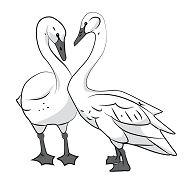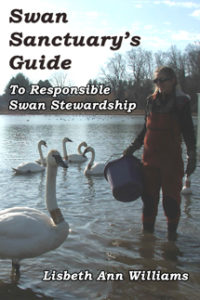Growing up in the 1960s I was instilled with the understanding that water is precious and wasting it, in my family, was not tolerated. Because we lived in an arid climate and received very little rain, we knew there was a real possibility of a water shortage. Most of our water came from snow melt high in the Rocky Mountains, in early spring. The abundance of water was, and still is, dependent upon the amount of snow that falls during the winter.
I lived with my grandmother during the 1950s in those Rocky Mountains. I remember vividly, the walks with her from the underground spring back to the house. She carried a 5 gallon galvanized bucket in each hand, to fill two large, round galvanized tubs for washing clothes – one for washing and one for rinsing. She also carried them to fill the large oval galvanized tub that we used for our weekly bath. She carried the water for our basic kitchen needs and for drinking. We drank the water from a ladle that was kept next to the bucket of water and we never worried about germs – nor did we ever become sick. To this day, I have never tasted water so pure and so sweet as the water I drank from the buckets my grandmother carried.
I lived with my parents during the 1960s in a Denver suburb and at that time, the water was still potable. While it was not as good as the water I drank at Grandma’s, it was still cold and fresh right out of the faucet.
It was not until the early 1980s that my husband and I began buying bottled water – Mountain Valley spring water that was delivered from Arkansas – in 5 gallon glass bottles. By this time, there was a noticeable difference in the smell and taste of water that came directly from the kitchen faucet. Due to the cost, I no longer pay to have bottled water delivered; but I fill my own bottles from filtering machines at the grocery store. I have always drank a lot of water. I often add lemon slices or occasionally make fruit infused water to enhance the taste. I do not purchase sodas or drink so called “enhanced” waters, which now line entire grocery store shelves.
Scientists tell us that the oceans make up 97% of Earth’s water. It is salt water; however, so we cannot drink it. More than 2% of our water is bound up in ice at either the north or the south pole. The remaining and only utilizable water can be found in our rivers, streams, and lakes – which is less than .05%. Much of that water is stored in underground aquifers. Most of this approximately half of a percent, of all of Earth’s water, that is available to us, is contaminated. The aquifers are drying up and corporations are attempting to monopolize what little remaining water we have. This is why it is imperative that we begin to conserve this indispensable element that we cannot live without.
We must stop the profuse waste of water. We can grow food in place of lawns. We can build berms and swales and install rain catchments around our property. We can harvest rainwater and create rain gardens. We can stop purchasing sodas and drinks in throw away plastic bottles. We are at the tipping point of losing what we can no longer take for granted. NOT HAVING water is a scary, scary thought – and that could easily become a reality.
7 AUGUST 2023 THE TIPPING POINT
This entry was posted in AUGUST 2023. Bookmark the permalink.



